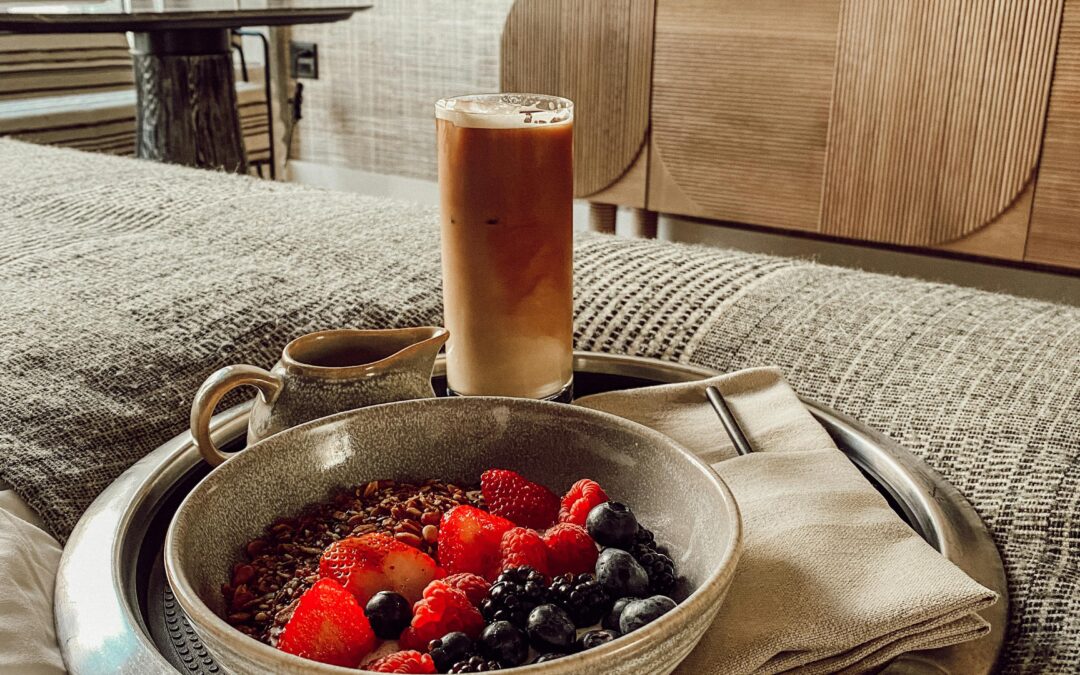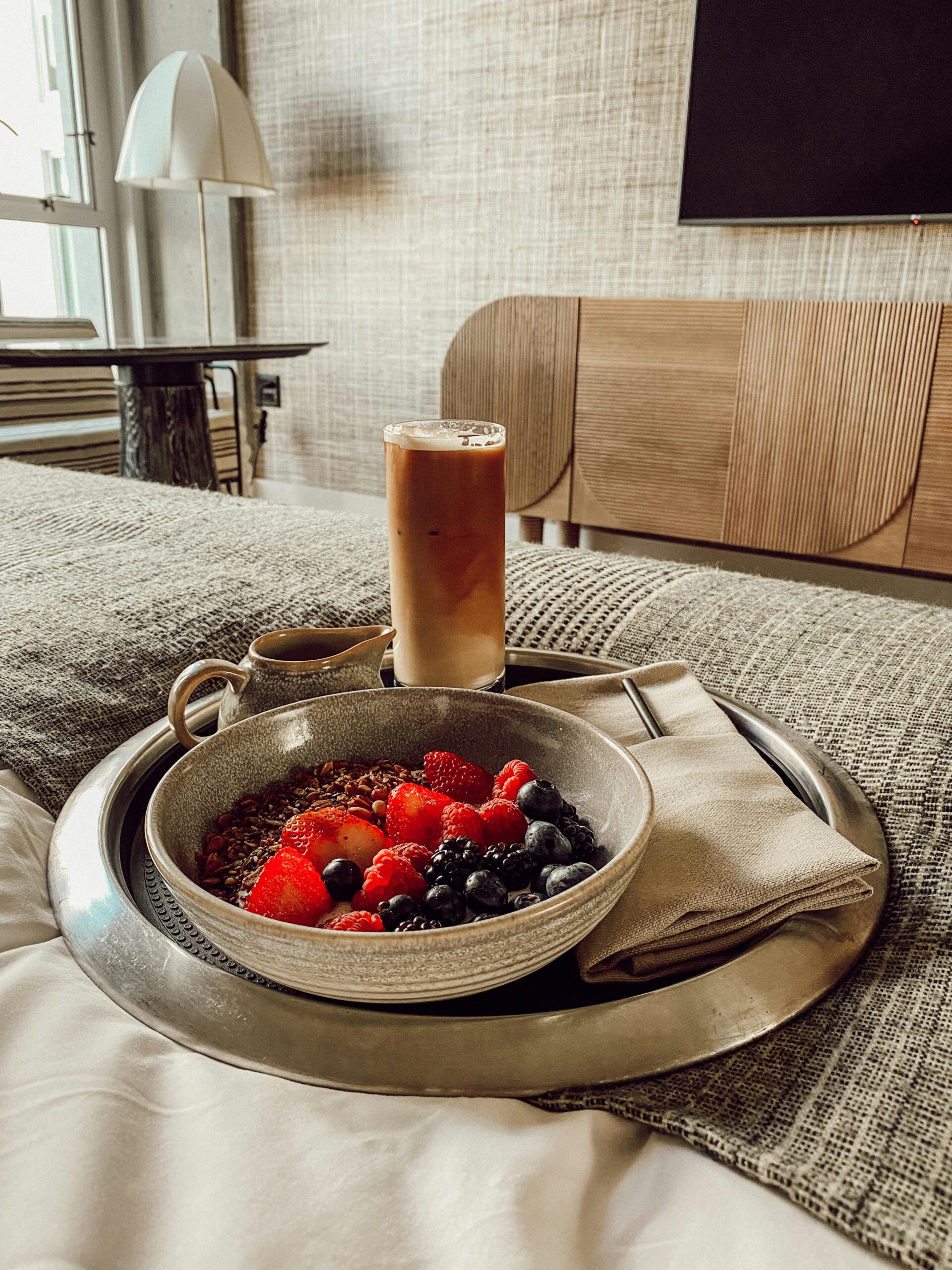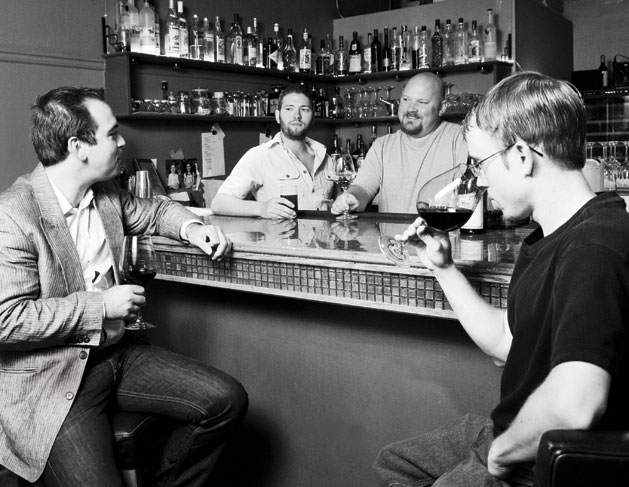
Area chefs (from left) Arnaud de Rambures, Dave Lancos, Kevin Nordeen and Erik Swanson discuss the state of culinary tastes in the Maple Grove/Osseo area. Photos: Emily J. Davis
Three local chefs dish on the Maple Grove dining scene.
What kind of dining options would we have if it weren’t for our independents? It was strange to think, as we were rounding up a group of chefs to have a conversation about dining trends in the Maple Grove area, that a little more than two short years ago, the community didn’t have a traditional French bakery like Chez Arnaud, a chef-driven, seasonal spot like Nectar Wine Bar and Bistro in Osseo, or the unique twist on bar food offered by the kitchen of Maple Tavern.
Unfortunately, many residents still don’t seem to know about the praiseworthy, locally owned options right in their own neighborhood. Chez Arnaud offers several daily flavors of freshly made quiche, handmade pastries and panini sandwiches, with an ever-expanding array of full-meal options that now include pasta, ratatouille and bruschetta. But owner Arnaud de Rambures, who got to know this area working in the medical device field before he shifted gears to open his bakery in 2010, says that even when the Original Pancake House across the parking lot is on a 90-minute wait for a table, customers don’t seem to turn their head and notice his bakery across the way. Within minutes, they could be eating a breakfast of artisan pastries, high-quality espresso drinks and quiche du jour.
We think that’s a pity, because when your experiences of dining out start to feel formulaic, these restaurants will breathe some life back into your palate. Kevin Nordeen, chef-owner of Nectar Wine Bar and Bistro, changes his menu completely every two weeks, offering 6–8 entrees at a time, adhering to the tradition of each particular dish, as with the duck breast in adobo sauce. “I like to stay true [in this case] to the way the grandmas would make it in Mexico. I don’t do a lot of fusion,” he says. Even the cocktails at Nectar, where, yes, there is a full bar, are handcrafted, with fresh squeezed juices and house-made sour.
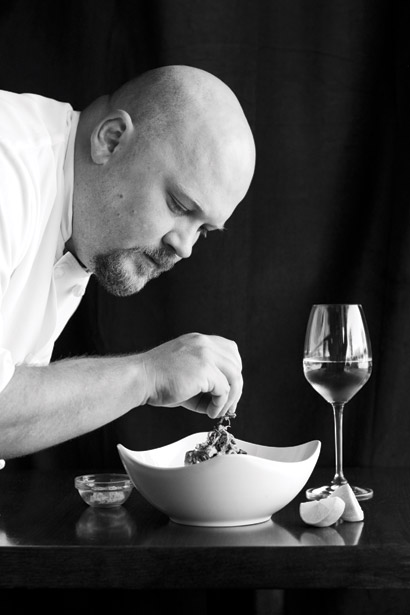
Yet, despite all the attention you’d think an ultra seasonal restaurant like Nectar would generate, Nordeen says it’s hard convincing people to come to Osseo, while he knows that customers are waiting 45 minutes for a table in high-rent retail districts like the Shoppes at Arbor Lakes. “There’s a feeling that it’s really far away. I’ve been here about two and a half years, and I still don’t get a lot of press from the city.”
Restaurants with small budgets (Nordeen and de Rambures have yet to pay themselves a salary) for advertising and a limited capacity for giving away deals at popular sites like Groupon (“Doing a Groupon [offer] would put me out of business,” says Nordeen), have to get creative to win their customers. Many times, that means offering dishes that are less predictable and a little further off the beaten path.
Dave Lantos, executive chef at Maple Tavern gets his customers to go out on a limb by offering to pay for his off the wall peanut butter burger if they don’t like it. “There have been countless times I’ve been walking through the dining room and hear customers muttering about it – they think it’s crazy. So if they promise me that they like peanut butter I’ll offer to buy it for them. I haven’t had to buy one yet,” he says.
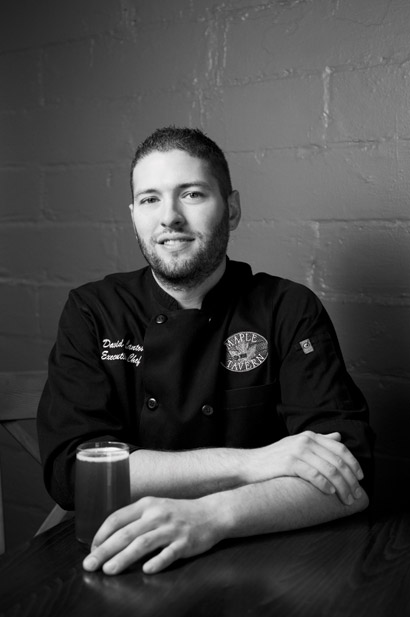
Sous chef Erik Swanson agrees. “Some of our stranger burger options are some of the more popular. If you can convince them not to go with the norm, by taking something familiar and comforting, and doing something cool with it, it works,” he says.
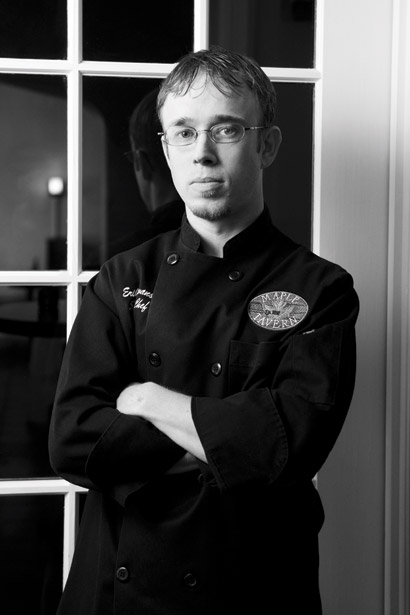
Swanson also emphasizes the friendly, familiar service that offers customers something more at Maple Tavern. “We’re not the kind of place where people just want to get in and get out,” he says, “People can take time to enjoy the higher quality product we’re putting out.” Lantos adds that you get to know people at the restaurant, like the chef or the owner, who will say hello to you every time you come in, and buy you a beer once in a while. “It has an old-style feel, with people that come in for dinner once a week, and that’s something you can’t buy,” he says. Nordeen is also fond of that chef/customer relationship. “I would rather have 1,000 regulars than 10,000 new customers. With our style of place, developing that relationship is really important. I strive to get people to come in once every menu change.”
All of the chefs put a premium on the love and passion that goes into their cuisine, something more evident when you’re patronizing a small, independent restaurant where the owner is dependent on each customer’s business. The raspberry tartlets at Chez Arnaud, for example, are touched by the hands of four pastry chefs throughout the day and night—starting with the baker that prepares the tart shell dough to the one that applies the cream finish on top. “Communication about the food you do is very important and hard at the same time. About 40 percent of customers think this is premade stuff the first time they come in here. They have no idea everything is made from scratch and that our kitchen is running 24 hours a day,” says de Rambures, who installed a window overlooking his kitchen area so people could see for themselves the effort going into the pastries they buy.
Nordeen agrees that once customers taste his food first hand, they understand the value of what his restaurant is producing. “Because this is the land of chains, it’s been tougher to get people to realize [the value of what we’re doing]. They can’t believe that this type of place is in Osseo—that they don’t have to go downtown or to south Minneapolis. We don’t try to be everything to everybody,” he says. “We stick to our guns, do what we’re passionate about, and strive to be consistently excellent.” The steadfast approach at Nectar seems to be slowly drawing in loyal customers. While at least half are from Maple Grove or Osseo, there’s been an uptick in the number of customers that travel from other parts of the city, which is essential for a destination restaurant with little walk-in traffic.
After two years in business, each chef says that they couldn’t possibly do what they do without having a competent, trustworthy staff to back them up. De Rambures says he had five employees in his first year of business, then booming to nearly 40, and he was running out of product all the time, but things have since settled. Nordeen, who struggled to delegate in the beginning, realized how important it was to get off the line, so he could get face time on the dining room floor with his customers. “People really like to see you out there, when the restaurant is representing you…that was really important,” he says. Now, he’s sure to hire people that are not only talented, but fit in like family, because he does end up spending more time with them than with his own family.
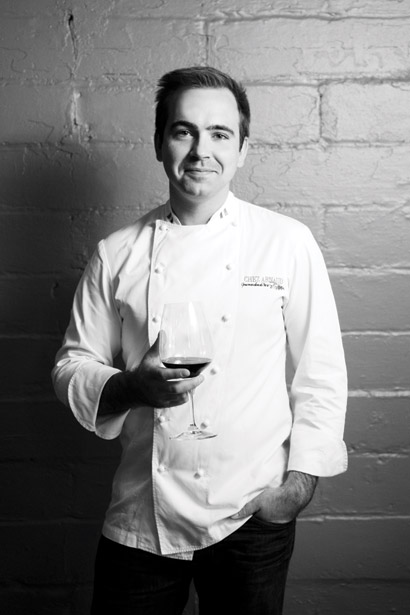
Knowing the extent of grueling labor and stress involved, you may wonder why anyone would want to put themselves in the position of serving hungry, demanding diners. For this group, the headaches are only justified by the fact that the work is truly a labor of love. Lantos, who has spent more than 11 years in the industry, says that while he explored other careers along the way, he found that cooking was the only thing that enabled him “to love his work for 14 hours a day rather than hating it for eight hours a day.”

